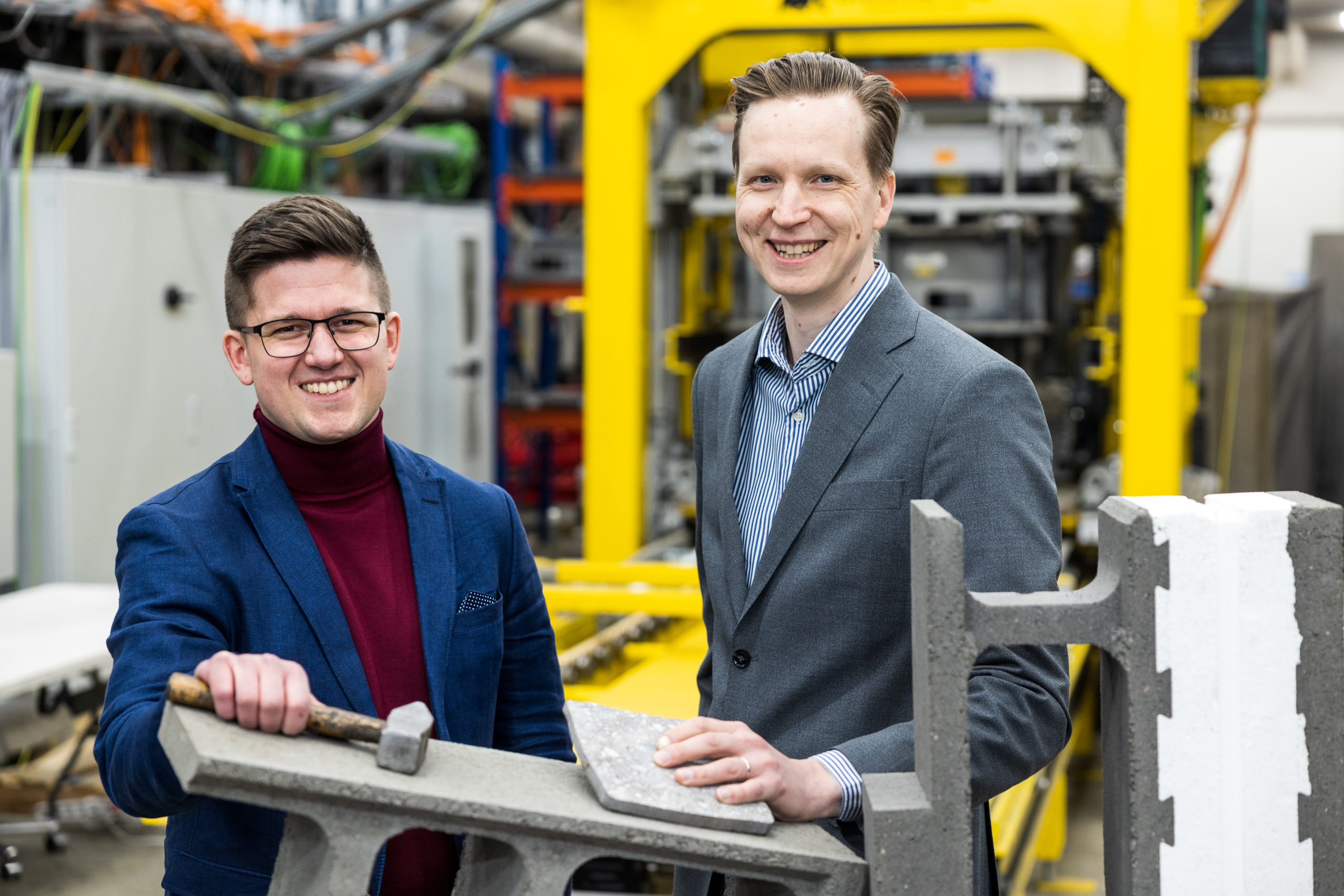Carbonaide raises EUR 1.8 million to make manufacturing concrete carbon negative
With its factory-sized pilot unit and fully operational value chain, Carbonaide can mineralize up to five tons of CO2 per day and increase production by 100-fold of its carbon-negative concrete products

Carbonaide, a spin-out company from VTT Technical Research Centre of Finland that enables the manufacturing of carbon-negative concrete, has raised EUR 1.8 million in seed funding led by Lakan Betoni and Vantaa Energy. The round was completed with public loans and in-kind contributions from Business Finland and other Finnish concrete companies and strategic investors.
”Carbonaide’s vision is to open ten operational units in the Nordics by 2026 and bind approximately 500 megatons of carbon dioxide annually by 2050 – corresponding to 10–20% of the concrete market.”
The company will use the funding to integrate its CO2 curing technology into an automated production line of precast concrete factory in Hollola, Finland. With its factory-sized pilot unit and fully operational value chain, Carbonaide can mineralize up to five tons of CO2 per day and increase production by 100-fold of its carbon-negative concrete products.
The concrete industry is responsible for 8% of global CO2 emissions, with most of the emissions originating from ordinary Portland cement manufacturing: one tonne of ordinary Portland cement creates 800–900 kilograms of CO2 emissions. With legislation increasingly tightening around construction material emissions, industrially feasible technologies to reduce the CO2 emissions of concrete are severely needed.
Carbonaide’s solution is based on an effective carbonation method, which binds carbon dioxide into precast concrete using an automated system at atmospheric pressure. The technology can halve the CO2 emissions of traditional Portland cement concrete by reducing the required cement content and mineralizing CO2 into concrete.
When industrial side streams, such as industry slags, green liquor dregs, and bio-ash, are used in the binding process instead of normal cement, the result is concrete with a negative carbon footprint. In the process, CO2 is permanently stored and removed from the carbon cycle.
“We have demonstrated in the pilot unit that our technology is capable of reducing the CO2 emissions of conventional concrete by 45%. Last autumn, we demonstrated lowering our products’ carbon footprint to -60 kg/m3 by replacing Portland cement with slag. Our first pilot unit had limited capacity, so we’re grateful to our investors for the chance to upscale our technology to a factory sized pilot and demonstrate the technology full-scale,” says Tapio Vehmas, CEO of Carbonaide.
“Our goal at Carbonaide is to create a more sustainable future with cutting-edge tech that doesn’t just reduce the carbon emissions of construction materials like concrete, but that traps more CO2 than they emit throughout their lifetime. It is very natural that the constructed environment becomes a CO2 sink as it is the largest volume of man-made material,” continues Vehmas.
With governments introducing taxes, emission trading mechanisms, and renewable energy targets, and consumers willing to pay a premium for low-carbon products, material producers and construction companies have recognized the need to comply with the new market situation.
“As new innovations take ground, the demand for low-carbon products will likely increase. New technologies, such as Carbonaide, provide the means for the industrial-scale production of affordable low-carbon products. We’re happy to support Carbonaide scale up its production and realize the world’s first CO2 curing integration to a fully automated precast concrete production line,” says Juho Hiltunen, CEO of Lakan Betoni Oy, one of the concrete companies that invested in Carbonaide.
“Avoiding carbon dioxide emissions should always be the primary mechanism to foster biodiversity. However, carbon capture and permanent storage of unavoidable CO2 emissions are needed to enable a sustainable carbon cycle, e.g., in the Waste-to-Energy sector. Carbonaide technology is an excellent example of how to both reduce and utilize existing CO2 in new products and permanently store carbon from the cycle,” says Matias Siponen, Business Development Manager from Vantaa Energy Ltd, one of Carbonaide’s strategic investors.
Carbonaide’s vision is to open ten operational units in the Nordics by 2026 and bind approximately 500 megatons of carbon dioxide annually by 2050 – corresponding to 10–20% of the concrete market.
The project has been part of VTT LaunchPad, a science-based spin-off incubator, where VTT researchers and technology are brought together with the best business minds and investors out there to renew industries. VTT LaunchPad supports incubator teams to develop VTT-owned IPR into fundable spin-off companies.
Contact
Tapio Vehmas, CEO
Carbonaide Oy
Tel. +358 40 591 1589
E-Mail: [email protected]
Source:
VTT and Carbonaide, joint press release, 2023-03-28.
